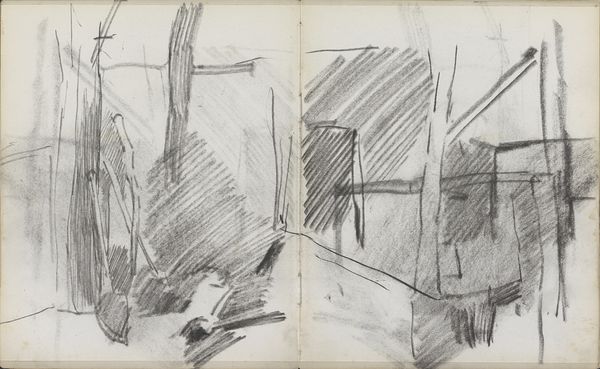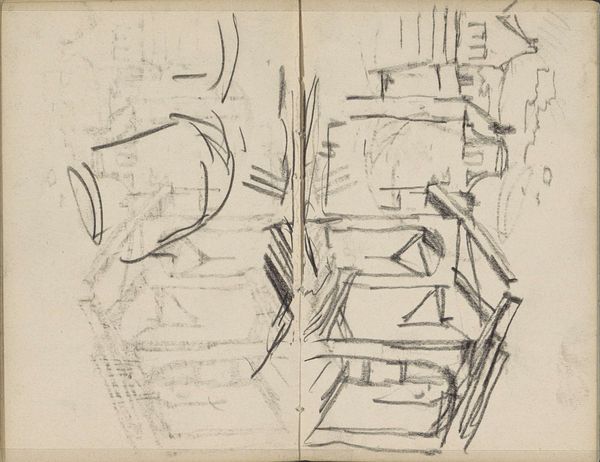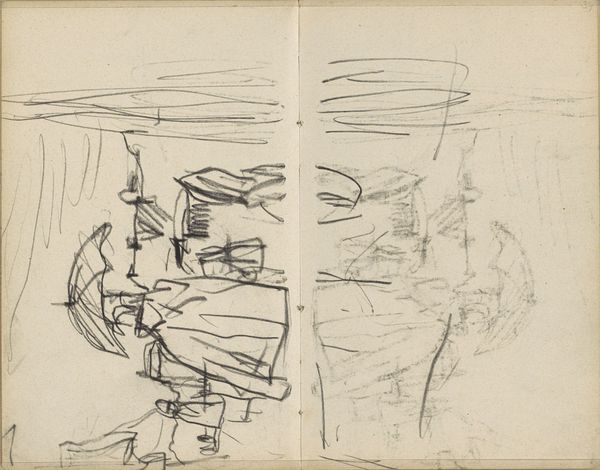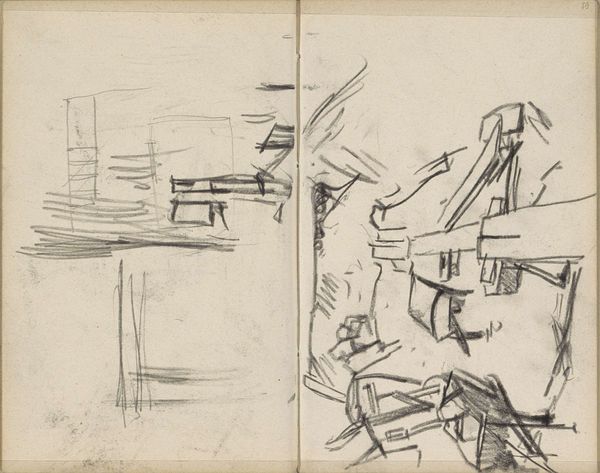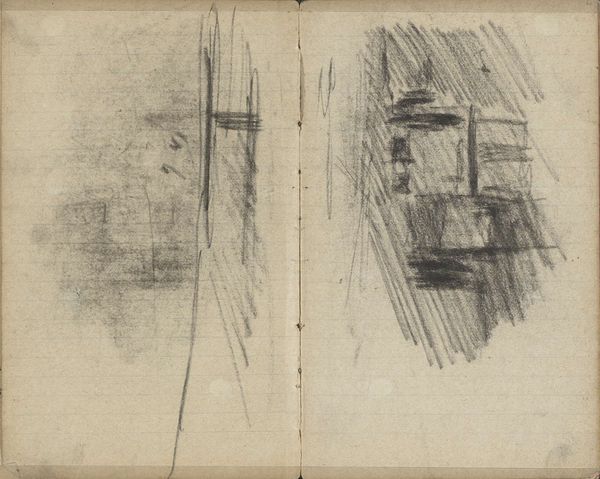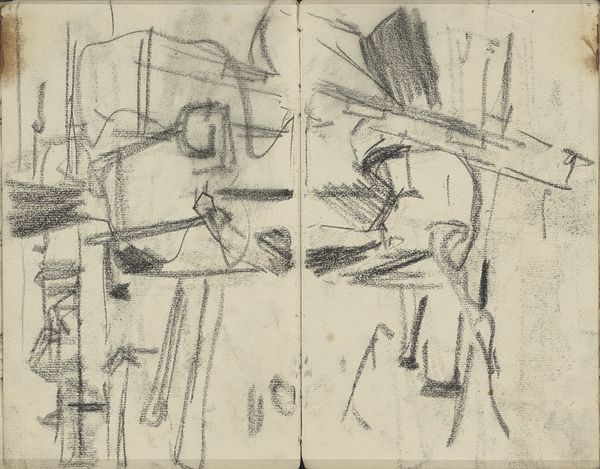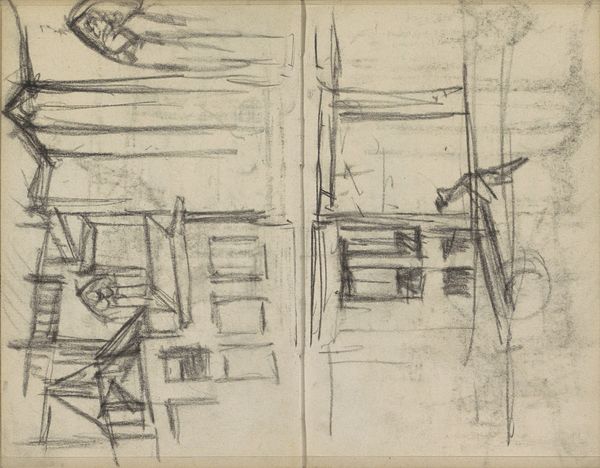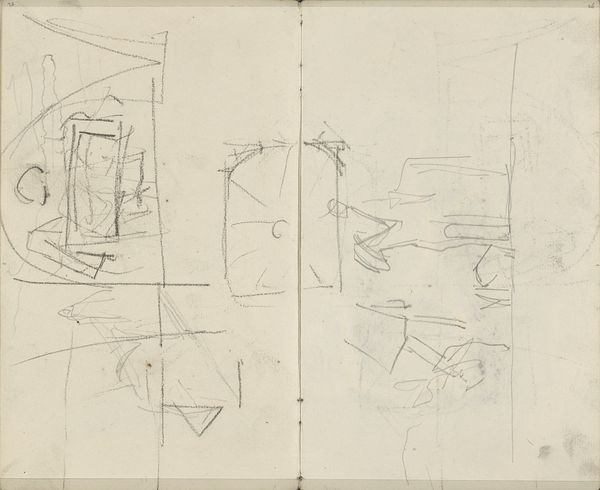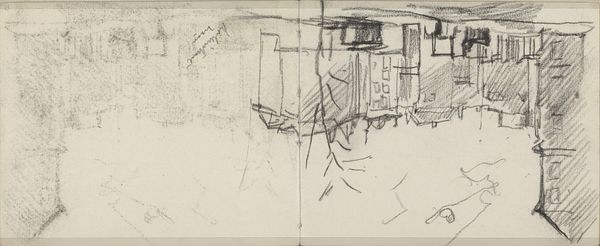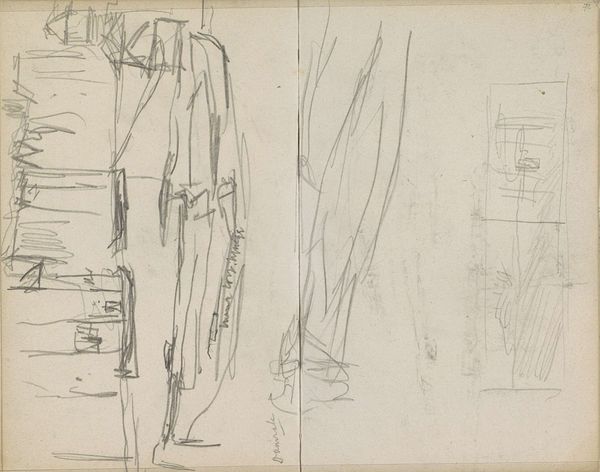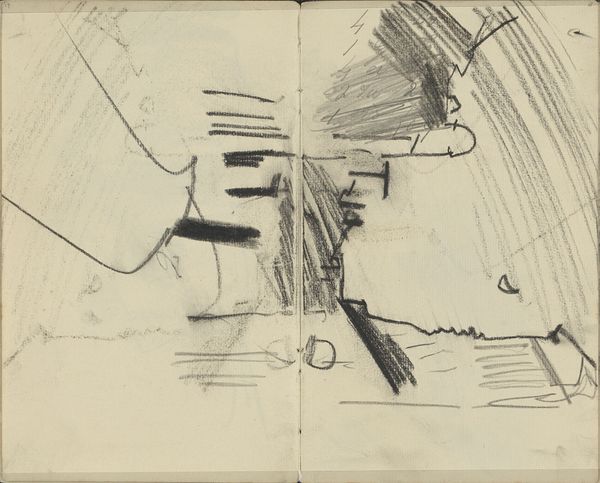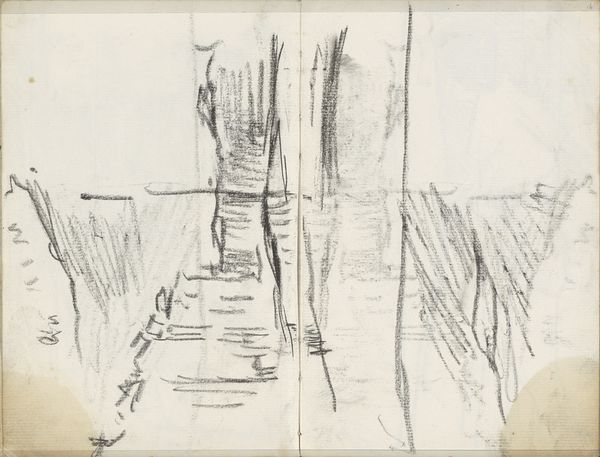
Copyright: Rijks Museum: Open Domain
Editor: So, here we have George Hendrik Breitner’s “Doorgang of poort”, a charcoal and pencil drawing made sometime between 1880 and 1906. I find the sketch-like quality so striking – it feels like a fleeting moment captured on paper. What stands out to you in this piece? Curator: It's interesting you say that, because the "fleeting moment" connects deeply with Breitner's engagement with urbanization. How do urban environments become depicted and framed within the cultural discourse? These quick sketches, typical of his practice, reflect the changing landscape of Amsterdam, marked by construction, demolition, and evolving social dynamics. Notice the provisional quality, the unfinished appearance – what statement do you think Breitner makes here? Editor: I guess it’s almost like he’s showing the city in progress, not as a finished product. He captures a state of flux, maybe even a little bit of the chaos of urban development. Curator: Precisely. It’s worth thinking about who gets to define that “progress,” right? Think about whose voices, experiences, and perspectives are included or excluded in representations of urban spaces, both then and now. Whose narrative does this drawing privilege, or obscure? Editor: So, it's not just a drawing of a doorway; it's also a commentary on how cities are built, rebuilt, and experienced by different people within a specific historical moment? Curator: Exactly! We must ask ourselves how the very act of portraying urban change serves certain interests. Does this image make you think about the politics embedded within it? What about the implications of those choices, regarding who or what the artwork might inadvertently erase? Editor: I hadn’t thought about it that way, but now I’m definitely seeing this "simple" sketch in a completely new, richer context! Thank you for shedding light on its social and political dimensions. Curator: My pleasure. It shows us that art, even something as seemingly simple as this sketch, is never created in a vacuum. We need to look beyond the immediate image, right?
Comments
No comments
Be the first to comment and join the conversation on the ultimate creative platform.
